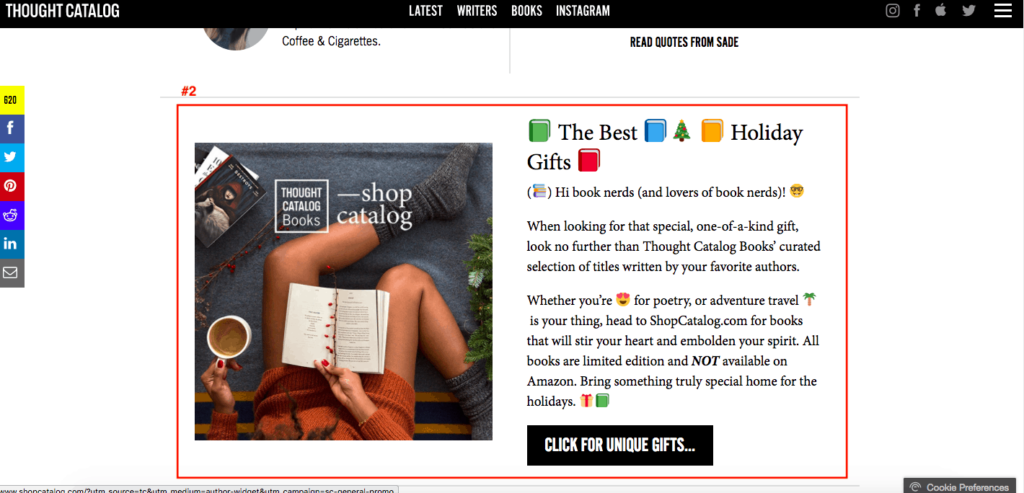
This post was most recently updated on May 11th, 2020

#1: Each ad should be consistent and should be labeled with “Advertisement.” Otherwise, Thoughcatalog.com is at risk of getting banned by Google for ad placement violations. All it would take is an influx of accidental clicks.

#2: This looks like an interesting affiliate/partnership offer. It is white-labeled to the site and seems quite relevant which is useful for the users. However, it is in prime potential ad space and should be A/B tested against a flex ad unit (728×90, 300×250, 970×250, 970×90). The publisher should make an apples-to-apples comparison of the page RPM of each to decide which offer best business value.

#3: Blanks ads should be minimized as much as possible. There should be a DFP line item that targets every ad unit, device, geo and any other relevant targeting factor. Additional analysis should be conducted using the Yield and Unfilled Ad Impression Reports to narrow down where the unfilled ad impressions are happening to eliminate them.
Additional live diagnosis can be done using Google Publisher Console. PubGuru Header Bidding has a feature that detects unfilled ad impressions and then refills them with a monetized ad. This is better for your bottom-line and the aesthetics of your site.

#4: A 300×600 ad size should not be used in-content. It leads to bad user experience. Only ad sizes that don’t exceed a vertical length of 250px should compete for in-content ad space.

#5: Although it is known that the HeaderBid Expert app timing stats tend to be inaccurate, these time stats are too high. DFP and header bidding are not set up in an optimal fashion which could be causing this. We’ll get into that in greater detail later.
This app detects ad networks not from the header bid code but from live code that also comes from managed demand. While there may be more ad networks running within DFP, we’d recommend running the below ad networks:

#6: These are not the optimal ad sizes to run. Only Google would run these sizes and even within Google there is minimal demand. Hopefully, these sizes are not being requested within Prebid. Otherwise, the auction would be getting held back with wasted bid requests.

#7: With 6 ad units on-page, the DFP load time is a bit too long. Additional optimization on the header bid setup can improve the DFP overall load time.
We trust that this programmatic inspection has given you more insight into the process we follow here at MonetizeMore to increase our publisher partner’s revenues.
If you would like us to conduct a programmatic review of your premium publisher property or want our help in implementing these ad optimization techniques, be sure to sign up for a free consultation here.

Kean Graham is the CEO and founder of MonetizeMore & a pioneer in the Adtech Industry. He is the resident expert in Ad Optimization, covering areas like Adsense Optimization,GAM Management, and third-party ad network partnerships. Kean believes in the supremacy of direct publisher deals and holistic optimization as keys to effective and consistent ad revenue increases.
10X your ad revenue with our award-winning solutions.